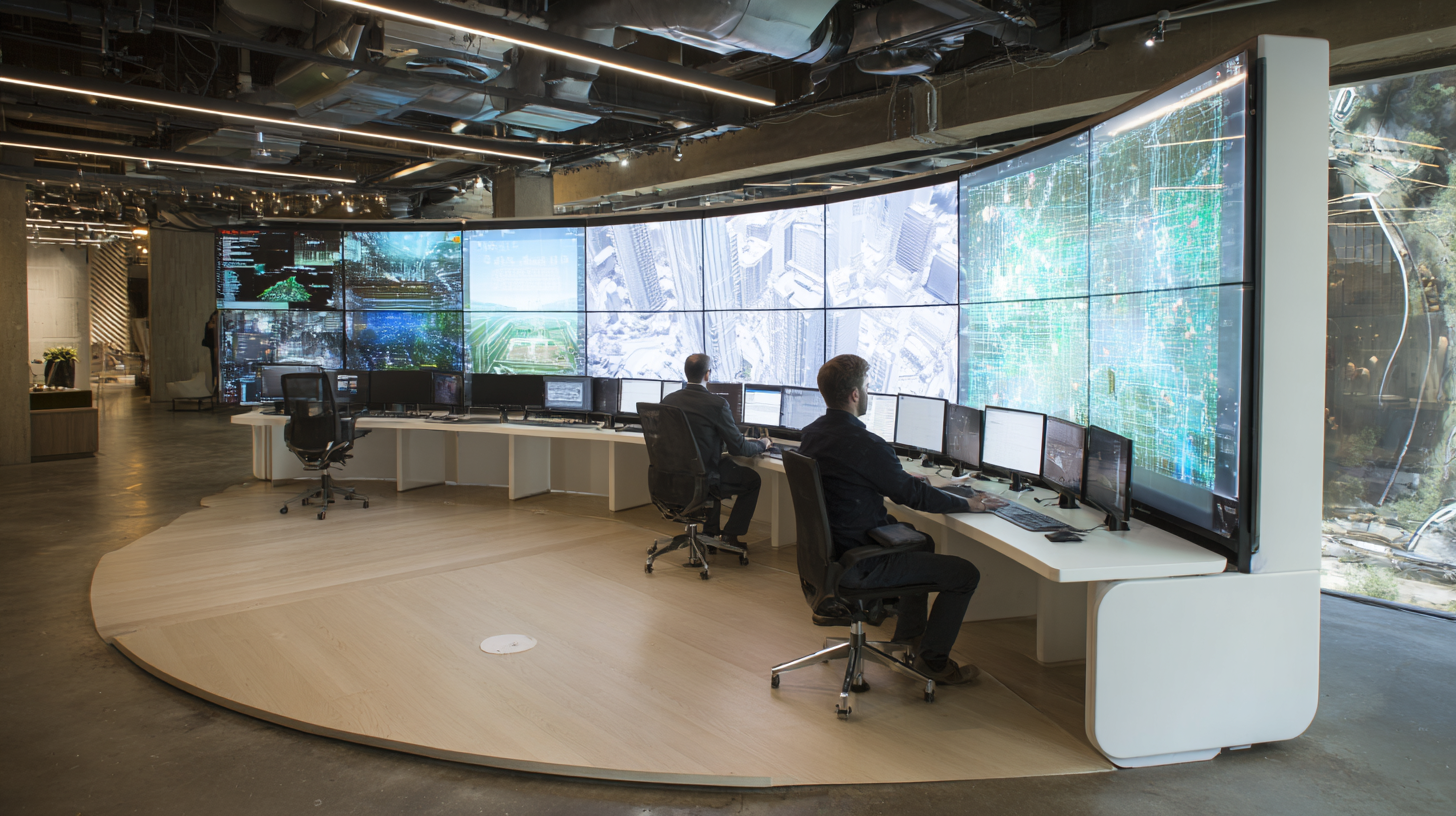In recent years, various industries have embraced innovative technologies to enhance operational efficiency and user experiences, with Circular LCD Screens standing out as a transformative tool. According to a market research report by Grand View Research, the global LCD market is projected to reach $119.4 billion by 2025, driven significantly by advancements in display technology. Circular LCD Screens, with their unique design and versatility, are leading the charge in sectors like automotive, retail, healthcare, and smart devices, proving to be integral in improving both aesthetics and functionality.

By leveraging the unmatched clarity and compact form of these displays, businesses can engage customers and streamline processes, making them pivotal for modern enterprises aiming for sustainable growth. This blog will explore the top five industries revolutionizing efficiency through Circular LCD Screens and unveil seven key benefits that underline their importance in the evolving landscape of technology.
As industries strive for greater efficiency and streamlined operations, circular LCD technology is making significant strides in enhancing performance. Emerging sectors such as automotive, healthcare, and consumer electronics are at the forefront of this revolution. In automotive applications, circular LCD screens are used in advanced dashboard displays that provide vital information in a compact and visually appealing format, allowing drivers to access data quickly and safely. This trend not only enhances user experience but also contributes to overall road safety.
In the healthcare industry, circular LCDs are transforming how medical data is presented. These screens can showcase critical patient information in a way that is easy for healthcare professionals to interpret at a glance. For instance, modular circular displays can be strategically placed in hospital settings, improving workflow efficiency by allowing staff to monitor multiple parameters simultaneously without overwhelming clutter. Moreover, consumer electronics are also adopting circular LCDs for innovative product design, offering sleek and modern gadgets that captivate users while enhancing functionality.
As these industries continue to explore the possibilities of circular LCD technology, the potential for enhanced performance and efficiency is limitless.
 Circular LCD screens are emerging as a transformative technology across multiple industries, significantly reducing environmental impact. Their design minimizes energy consumption by up to 30% compared to traditional screens, aligning with the global push for sustainability. A recent report by the International Energy Agency predicts that advancements in display technologies, including circular formats, could cut carbon emissions from electronic devices by 50% by 2030. This shift not only enhances energy efficiency but also extends the lifespan of screens, thus reducing electronic waste significantly.
Circular LCD screens are emerging as a transformative technology across multiple industries, significantly reducing environmental impact. Their design minimizes energy consumption by up to 30% compared to traditional screens, aligning with the global push for sustainability. A recent report by the International Energy Agency predicts that advancements in display technologies, including circular formats, could cut carbon emissions from electronic devices by 50% by 2030. This shift not only enhances energy efficiency but also extends the lifespan of screens, thus reducing electronic waste significantly.
In sectors such as healthcare, automotive, and consumer electronics, the adoption of circular LCD screens is proving to be beneficial. For instance, hospitals using circular displays for monitoring can save approximately $500 per bed each year through reduced energy costs and lower cooling requirements. Additionally, circular screens have the potential to integrate seamlessly into product designs, allowing for more sustainable end-of-life solutions.
Tip: When considering upgrades to display technologies, explore partnerships with manufacturers focused on eco-friendly materials that contribute to a circular economy. Prioritize products with certifications like Energy Star, which can further ensure that your choices align with sustainability goals. By embracing these innovations, industries can not only improve efficiency but also play a crucial role in environmental conservation.
The advent of circular LCD displays is transforming various industries by enhancing efficiency and user experience. One key benefit of these displays is their superior visibility. Circular screens offer a wider field of view compared to traditional rectangular displays, making them ideal for applications in automotive and aviation sectors. According to a recent report by MarketsandMarkets, the automotive display market is expected to reach $34.1 billion by 2025, driven in part by innovations such as circular displays that improve driver interaction and reduce distraction.
Another significant advantage is their space-saving design. Circular LCDs can be seamlessly integrated into compact environments, leading to enhanced product aesthetics and optimized space utilization. In the retail industry, for instance, the use of circular displays for advertising has shown to increase customer engagement. A study conducted by Nielsen indicated that circular promotional displays can boost impression rates by up to 40%, underscoring their effectiveness in grabbing consumer attention. As industries continue to embrace these efficient display technologies, the benefits they offer are becoming increasingly undeniable.
This chart illustrates the percentage improvement in efficiency among various industries utilizing circular LCD screens. The data reveals that the aerospace sector experiences the highest efficiency boost, followed closely by the automotive and telecommunications industries.
In a rapidly evolving tech landscape, industries are utilizing innovative display technologies to enhance efficiency and redefine their operational workflows. Circular LCD screens have become a game-changer across various sectors by providing superior visibility and a sleek design that maximizes space utility. Companies are employing these displays not just for aesthetics, but to streamline processes, minimize clutter, and improve user interaction. The unique form factor of circular screens lends itself to modern work environments and retail spaces, allowing for immersive customer experiences and more engaging presentations.
Take the example of a major player in the tech industry that has successfully harnessed MICRO LED displays to push boundaries of visual performance. This display technology has shown notable advancements in energy efficiency and image quality, which have a significant impact on operational efficiency. Similarly, in the furniture industry, circular economy initiatives are promoting sustainable practices, such as buy-back and resale programs. This approach not only reduces waste but also extends the lifecycle of products, fostering a culture of sustainability that directly influences customer loyalty. Each of these success stories highlights a collective effort towards revolutionizing efficiency and sustainability, demonstrating the transformative potential of innovative technology and practices in diverse industries.
| Industry | Application | Efficiency Improvement (%) | Benefits |
|---|---|---|---|
| Manufacturing | Process Monitoring | 25% | Real-time data display, Reduced downtime |
| Healthcare | Patient Monitoring | 30% | Improved patient care, Enhanced data accuracy |
| Retail | Digital Signage | 20% | Increased customer engagement, Customized promotions |
| Transportation | Fleet Management | 35% | Improved route planning, Fuel savings |
| Education | Interactive Learning | 40% | Enhanced engagement, Improved learning outcomes |
The evolution of circular LCD technology is poised to transform various markets, enhancing both user experience and operational efficiency. As industries such as automotive, retail, and healthcare adopt this innovative display format, the focus is on creating more immersive and visually appealing environments. Circular LCD screens allow for unique integration into product designs, leading to visually striking interfaces that can attract customers and improve engagement.

In addition to aesthetic advantages, circular LCDs provide a host of practical benefits. Their ability to convey information dynamically can streamline operations, whether through navigation systems in vehicles or advertising in retail spaces. Moreover, the growing trend toward sustainable and energy-efficient technologies aligns well with the circular LCD design, as manufacturers seek to reduce waste and enhance recyclability. As markets evolve, we can anticipate a surge in the application of circular LCD screens, driven by the need for innovation and adaptability in a rapidly changing technological landscape.
